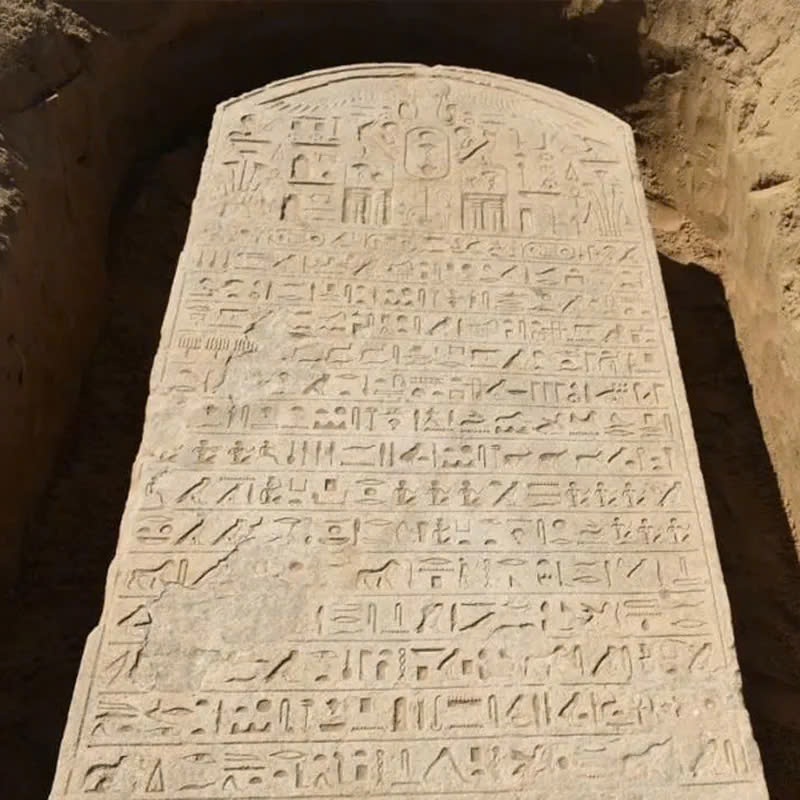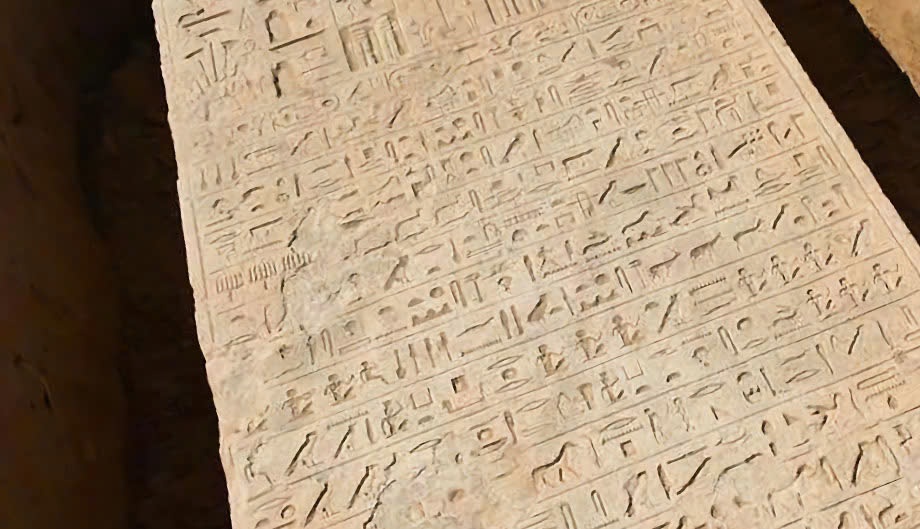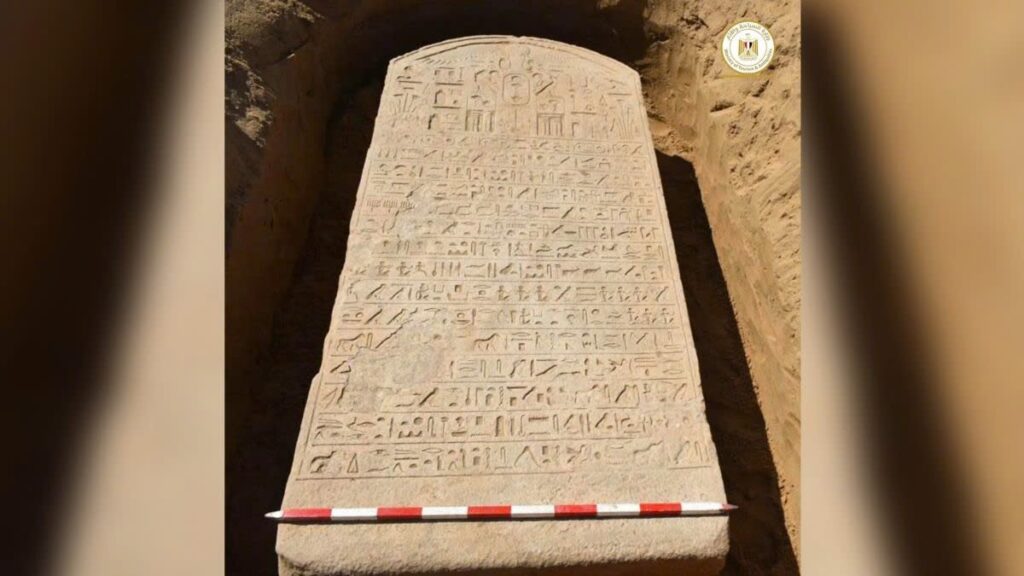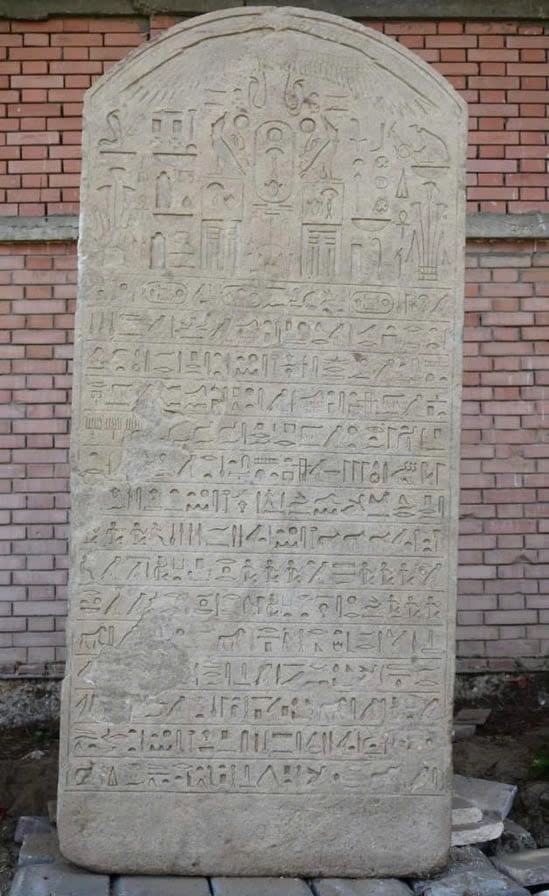Unexpected Find in Ismailia Reveals Pharaoh Apries’ Legacy
A Glimpse into Egypt’s 26th Dynasty
In a remarkable turn of events, a farmer tending to his land near Ismailia, Egypt, stumbled upon a fascinating piece of ancient history. The Egyptian Ministry of Antiquities recently announced the discovery of a 2,600-year-old stone monument, dating back to the reign of Pharaoh Apries, who ruled from 589 to 570 BC.

The sandstone slab, measuring an impressive 230 cm in length, 103 cm in width, and 45 cm in thickness, was unearthed approximately 100 kilometers northeast of Cairo. Upon realizing the significance of his find, the farmer promptly alerted the antiquities police.
Decoding the Royal Stele

The monument’s surface is adorned with intricate engravings, including a winged sun disk, possibly representing the sun god Ra, and a cartouche of Pharaoh Apries. Below these symbols lie 15 lines of hieroglyphic text, which experts are now working to decipher.

Mostafa Wajiri, secretary-general of the Supreme Council of Antiquities, suggests that the stele may be linked to Apries’ military campaigns east of Egypt. This artifact provides a unique window into the 26th dynasty, a period when Egypt maintained its independence and often ruled from the northern city of Sais.
Historical Context and Future Insights
Apries, also known as Wahibre Hibre, is a figure shrouded in historical intrigue. The ancient Greek historian Herodotus recounts a civil war during Apries’ reign, triggered by a military defeat against the Phoenicians. This conflict ultimately led to Apries’ downfall and the ascension of a new pharaoh named Amasis.

As scholars continue to study this newly discovered stele, there’s hope that it may shed additional light on these tumultuous events and enhance our understanding of this pivotal period in ancient Egyptian history.

